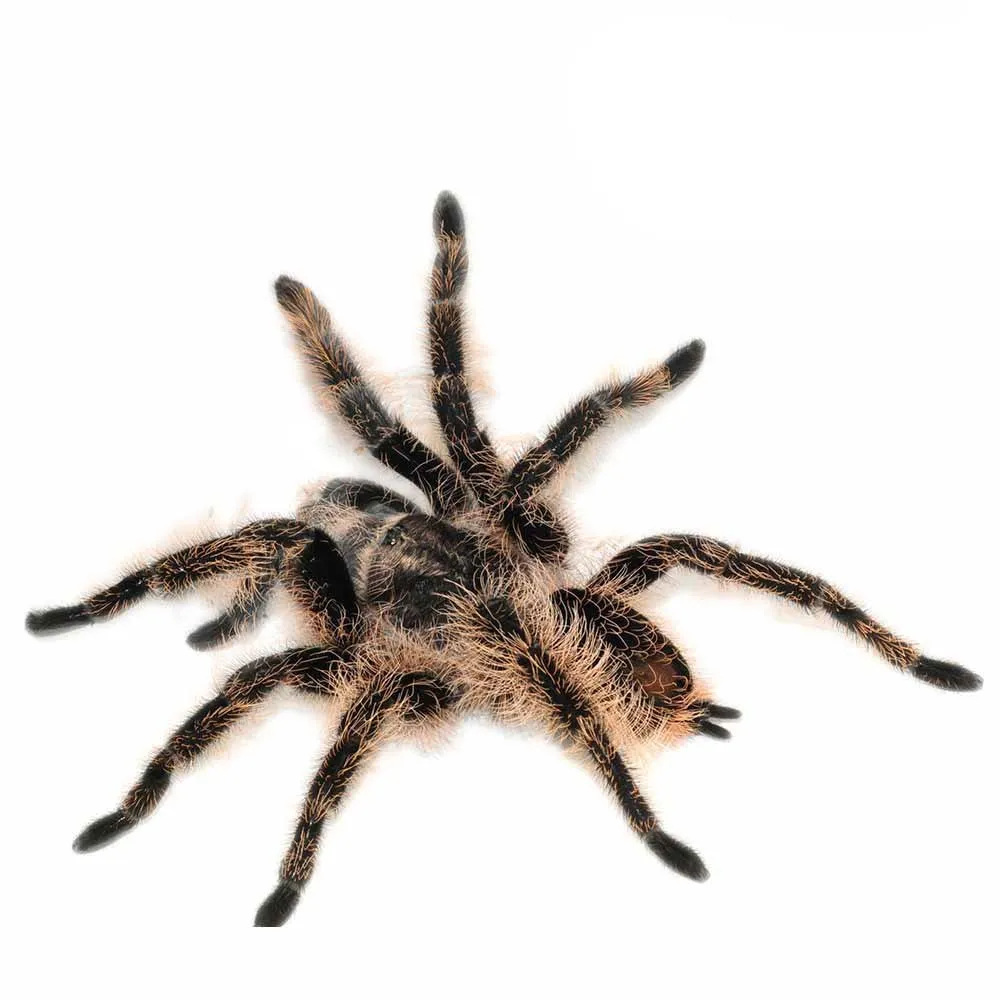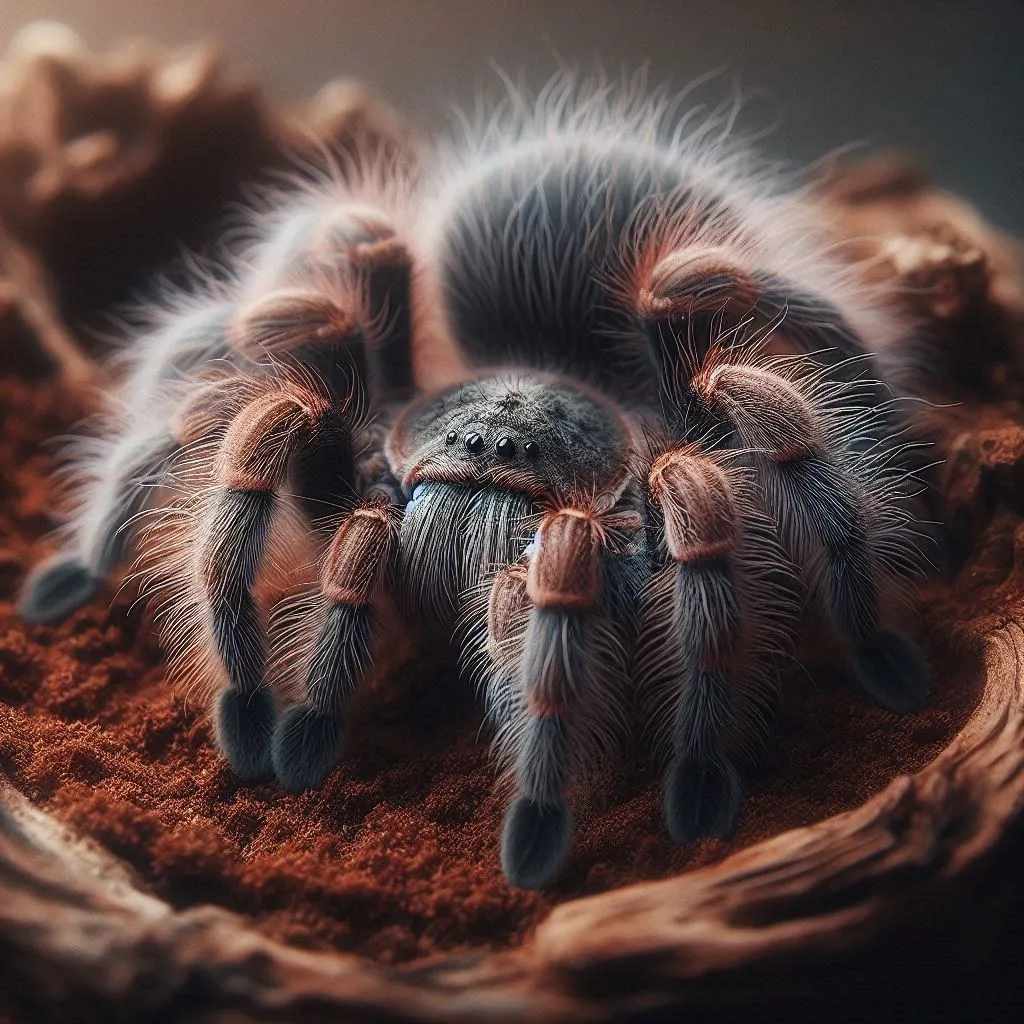Amazing Facts About Curly Hair Tarantula Eyes
The curly hair tarantula, Tliltocatl albopilosus, is a popular pet tarantula known for its docile nature and distinctive appearance. But have you ever stopped to consider the fascinating world hidden within those tiny, beady eyes? While not the primary focus of many tarantula enthusiasts, the eyes of the curly hair tarantula offer a surprising glimpse into its survival strategies and sensory adaptations. This article delves into five amazing facts about the eyes of the curly hair tarantula, providing a deeper understanding of these intriguing creatures. From their unique eye structure to their surprising visual capabilities, get ready to discover a whole new perspective on these captivating arachnids. We’ll explore everything from how they see the world, to the potential eye problems, and even how the eyes change during molting.
Eye Structure of the Curly Hair Tarantula
Unlike humans, who possess complex eyes with a single lens, the curly hair tarantula, like most spiders, has multiple, simple eyes. These eyes are arranged on the carapace, the hard shell covering the cephalothorax (the combined head and thorax). The number of eyes can vary slightly, but generally, they have eight eyes. This arrangement provides the tarantula with a wide field of vision, crucial for detecting movement from various directions, an essential advantage in both hunting and evading predators. The structure of each eye is relatively simple, consisting of a lens, a retina, and light-sensitive cells, but their collective function creates a surprisingly effective visual system.
Types of Eyes

The eight eyes of a curly hair tarantula are not all the same. They are specialized for different functions. The two primary eyes, located at the front of the carapace, provide the sharpest vision and are primarily used for detecting movement and shapes. The remaining six eyes, arranged around the sides and top of the carapace, offer a broader field of view, helping the tarantula detect threats and prey from various angles. This combination of specialized eyes gives them a distinct advantage in their natural environment, allowing them to react quickly to changes in their surroundings. The different types of eyes work together to create a comprehensive visual experience.
Vision Capabilities
While not known for exceptional eyesight, curly hair tarantulas possess vision capabilities well-suited to their lifestyle. Their visual acuity is not as sharp as that of humans, and they primarily rely on detecting movement, shadows, and changes in light. This is perfectly adequate for detecting prey and predators in their environment. The tarantula’s vision is more about detecting motion than discerning fine details. Their ability to sense even slight movements is crucial for their hunting strategy and helps them avoid being caught off guard.
Depth Perception
Depth perception in curly hair tarantulas is achieved through a combination of their multiple eyes and their ability to judge the distance based on movement and parallax. Parallax refers to the change in the apparent position of an object when viewed from different angles. The tarantula uses the slight differences in the images received by its different eyes to estimate the distance to an object. This is particularly helpful for accurately judging the distance to prey before striking. Even though they lack the stereoscopic vision of humans, their multiple eyes provide a good enough perception to hunt effectively.
Color Vision

The extent of color vision in curly hair tarantulas is still a subject of research, but it’s believed they can perceive some colors, particularly in the blue and green spectrum. This helps them differentiate between various objects and identify potential prey. Color vision is not as critical for tarantulas as it is for animals like birds, but it still plays a role in their visual world. They don’t see the world in the vibrant colors that we do, but they can detect shades and hues. Research continues to explore the full extent of their color vision capabilities, revealing new insights into their sensory world.
Eye Color Variations
The eye color of a curly hair tarantula can vary, often appearing dark, ranging from black to shades of brown. The specific hue can depend on factors like the individual tarantula’s age, genetics, and even the lighting conditions. While the differences might be subtle, the eye color can sometimes provide clues about the tarantula’s overall health and well-being. Dark, healthy-looking eyes are generally a good sign. However, it’s important to note that eye color variations are usually within a narrow range.
Factors Influencing Eye Color
Several factors can affect the eye color of a curly hair tarantula. Genetics play a significant role, with some individuals naturally having slightly different eye colors than others. Age can also be a factor, as younger tarantulas may have slightly different eye coloration than older ones. Lighting conditions also play a role, as the eyes’ appearance can change depending on the intensity and type of light they are exposed to. Finally, the overall health of the tarantula can influence eye color, so any dramatic changes should be monitored closely. Keep in mind that subtle variations are normal.
Eye Health and Care

Maintaining the eye health of your curly hair tarantula is relatively straightforward. Tarantulas are generally low-maintenance pets, and their eyes are typically resilient. However, it’s important to provide them with a clean and appropriate environment. Ensure the enclosure is free of dust and debris, as these particles can potentially irritate the eyes. Regular cleaning and proper humidity levels are essential for their overall well-being. While specific eye care is not generally needed, providing a healthy environment is a key factor in maintaining their eye health.
Common Eye Issues
Eye issues in curly hair tarantulas are not very common. However, potential problems include infections or injuries, although these are rare. If you observe any unusual symptoms, such as cloudy eyes, excessive blinking, or changes in behavior, it’s important to consult an experienced tarantula keeper or veterinarian. It’s crucial to identify and address any issues promptly to ensure your tarantula’s health and well-being. Proper care and environmental conditions significantly reduce the risk of eye problems.
Molting and Eye Changes
Molting is a natural process for tarantulas, where they shed their exoskeleton to grow. During molting, their eyes also undergo changes. The tarantula’s old eye coverings are shed along with the rest of the exoskeleton, revealing fresh, new eyes. This process can sometimes make the tarantula’s eyes appear brighter or clearer immediately after molting. Molting is a vulnerable time for tarantulas, as they are soft-bodied during this process. It is crucial to maintain optimal environmental conditions to support a successful molt and protect the tarantula during this period.
How Eyes Change After Molting

After molting, the tarantula’s eyes may look slightly different. The new eyes are revealed with a fresh, clean appearance. This often results in clearer vision, although this is difficult to measure. The color of the eyes may also appear brighter or more vibrant. The changes are typically subtle, but they are a natural part of the molting process. Providing a safe and stable environment during molting is crucial to ensure the eyes and the overall health of the tarantula are maintained, as the new exoskeleton and eyes harden and adjust to the new stage.
In conclusion, the eyes of the curly hair tarantula, though small, are a fascinating aspect of their anatomy, providing valuable insights into their sensory world. From the unique structure of their multiple eyes to their depth perception and color vision, the eyes of the curly hair tarantula are well-adapted to their lifestyle. By understanding these amazing facts, we can appreciate the beauty and complexity of these captivating creatures even more. Paying attention to their eyes, and being mindful of their care, helps us better provide for these fantastic arachnids. So, next time you look at your curly hair tarantula, remember that you’re peering into a world of unique sensory experiences.
